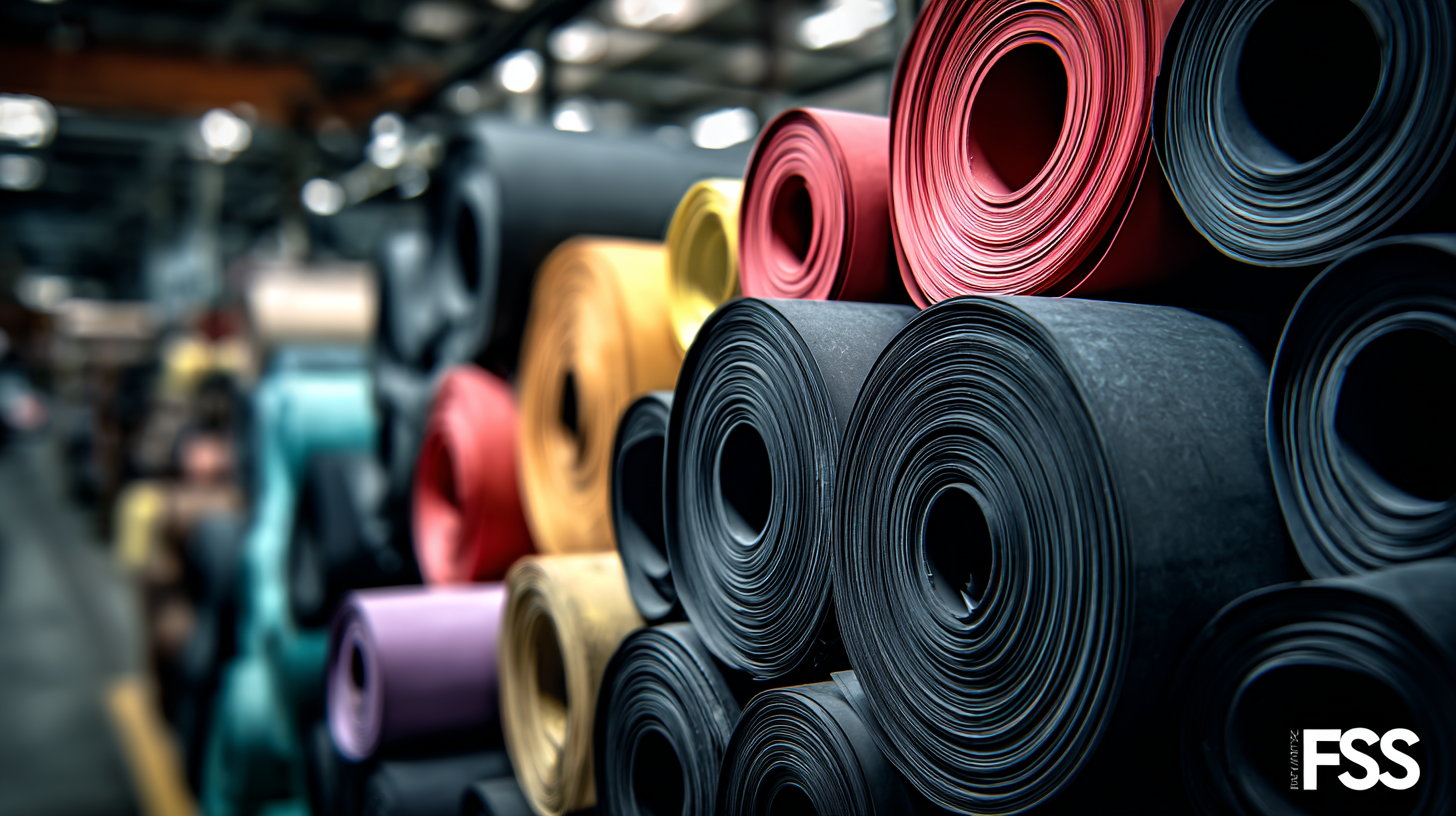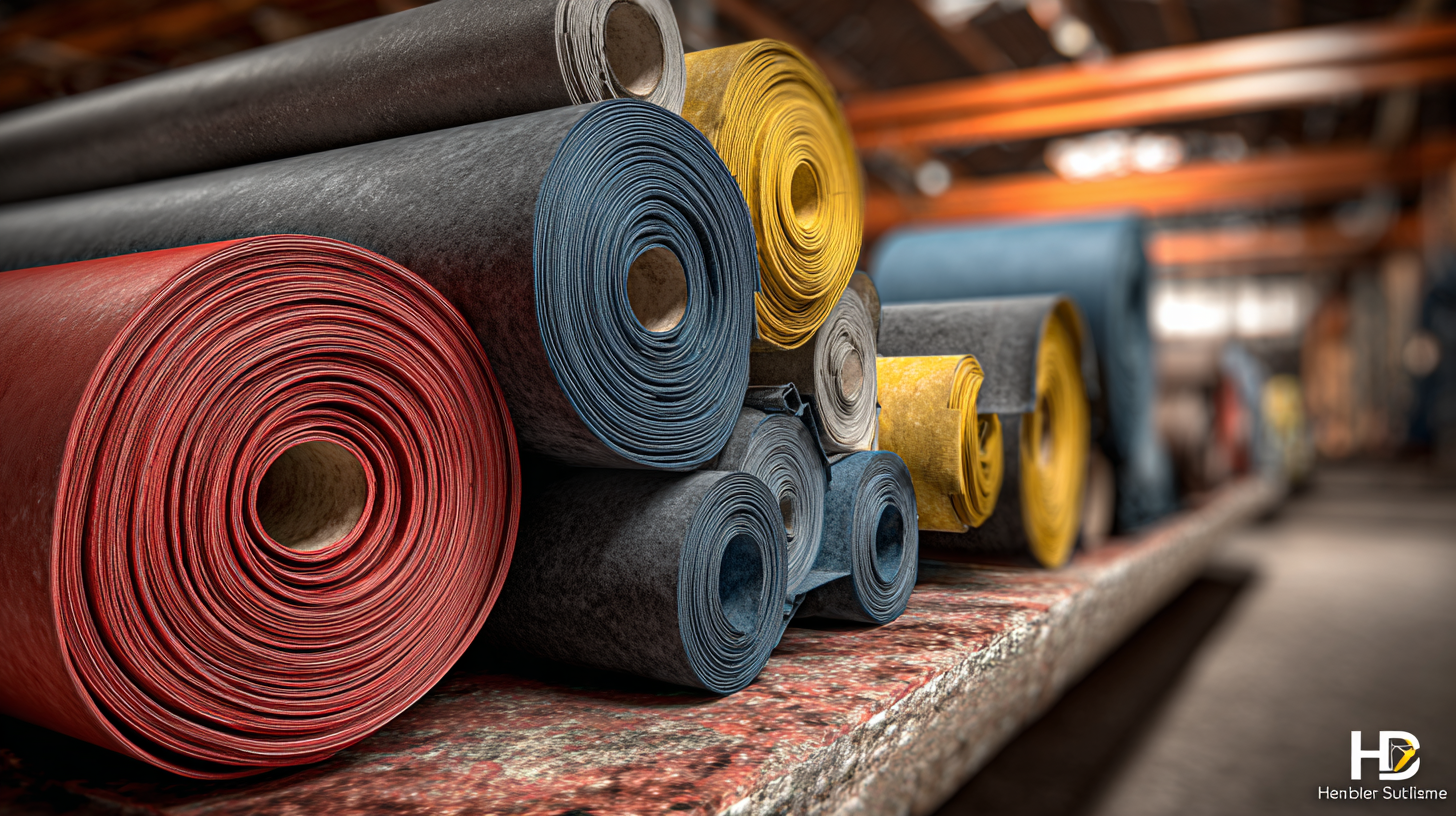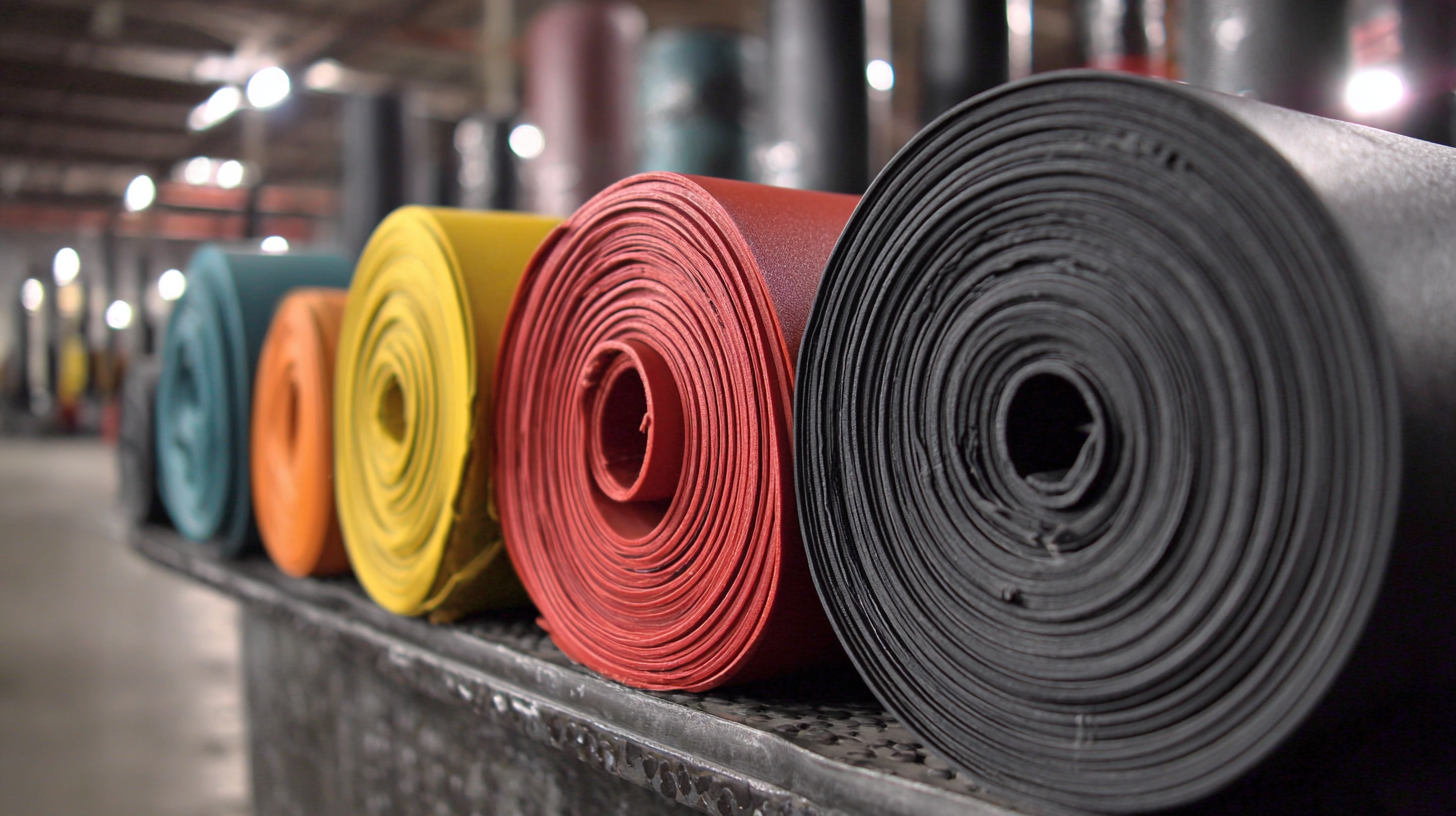


In the vast landscape of industrial materials, the rubber sheet stands out as a versatile and essential component across various sectors. The global rubber sheet market was valued at approximately $4.5 billion in 2021 and is projected to grow at a CAGR of around 5.2% from 2022 to 2030, according to recent industry reports. With increasing applications in manufacturing, construction, and automotive industries, selecting the right rubber sheet is critical for optimizing performance and ensuring compliance with international standards. Import and export certifications, such as ISO and ASTM, play a pivotal role in guiding industries towards quality assurance and reliability. Thus, understanding the nuances of material properties, certifications, and manufacturing types is essential for businesses aiming to leverage rubber sheets effectively in their operations.

When selecting the best rubber sheet for industrial applications, it is crucial to understand the various types available in the market. According to a recent report by Grand View Research, the global rubber sheets market is expected to reach USD 3.4 billion by 2027, driven by growth in industries such as automotive, manufacturing, and construction. The two most commonly used rubber sheets are natural rubber and synthetic rubber, each offering distinct properties suited for different applications.
Natural rubber sheets are known for their excellent tensile strength and resilience, making them ideal for applications requiring flexibility and durability. In contrast, synthetic rubber sheets, including neoprene and EPDM, provide superior resistance to heat, chemicals, and weathering. A study by ResearchAndMarkets indicates that neoprene rubber sheets are particularly favored in the automotive sector due to their resistance to oils and fuels. Understanding these distinctions and selecting the appropriate type of rubber sheet can enhance efficiency and safety in industrial processes.
When selecting the best rubber sheet for your industrial needs, it's essential to consider several key factors to ensure optimal performance and suitability for your applications. One significant aspect is the type of rubber material used, as different compounds offer varying properties such as elasticity, heat resistance, and chemical compatibility. For instance, natural rubber excels in flexibility, while neoprene is known for its durability in harsh environments. Being aware of these differences will help you choose the right material for your specific industrial needs.
Another crucial factor is the thickness and dimensions of the rubber sheet. Depending on the application, whether it involves protection, sealing, or cushioning, the right thickness can enhance the performance and longevity of the rubber sheet. Ensure that you consider not only the physical dimensions but also the load-bearing requirements and any specific installation conditions.
Tip: Always request samples to test the rubber sheet before making a bulk purchase. This allows you to evaluate its properties in real-world conditions and make a more informed decision. Additionally, consider the supplier's reputation and technical support, as their expertise can provide valuable insights into your specific requirements.
When choosing the right rubber sheet for industrial applications, it’s essential to understand the differences between natural and synthetic rubber.
 Natural rubber, derived from latex, offers superior elasticity and tensile strength, making it ideal for applications that require flexibility under stress. According to data from the Rubber Manufacturers Association, natural rubber can withstand temperatures up to 70°C, providing excellent performance in dynamic applications like automotive and heavy machinery.
However, it is vulnerable to environmental factors such as ozone and UV light, which can lead to degradation over time.
Natural rubber, derived from latex, offers superior elasticity and tensile strength, making it ideal for applications that require flexibility under stress. According to data from the Rubber Manufacturers Association, natural rubber can withstand temperatures up to 70°C, providing excellent performance in dynamic applications like automotive and heavy machinery.
However, it is vulnerable to environmental factors such as ozone and UV light, which can lead to degradation over time.
On the other hand, synthetic rubber sheets, made from a variety of polymers, present a broader range of options tailored to specific industrial needs. For instance, neoprene rubber excels in oil and chemical resistance while EPDM is favored for its durability against weathering and heat. Market analysis from Grand View Research suggests that the synthetic rubber market is projected to reach $41 billion by 2025, reflecting the growing preference for custom-tailored solutions that offer enhanced performance in challenging conditions. This versatility makes synthetic rubbers a formidable competitor, especially in industries where environmental resilience is paramount.
When selecting a rubber sheet for industrial applications, evaluating
thickness and durability is paramount. Different industries demand varying thickness levels to meet specific operational requirements. For instance, in battery manufacturing, it’s crucial to measure the consistency of the electrode sheet thickness, as it directly impacts the battery's energy density and safety. Reports indicate that the thickness of electrode sheets can significantly affect performance metrics, underscoring the need for
precise measurements and quality control in this sector.
Additionally, the growth of the disposable plastic bag market highlights how thickness categorization—light, medium, and heavy—affects usability and compliance with industry standards. The market is projected to see substantial growth, with applications ranging across
retail, agriculture, and healthcare, each requiring tailored thicknesses for optimal performance. As organizations strive for efficiency and safety, selecting the right rubber sheet thickness becomes critical, as seen with the
projected increases in industry-specific demands by 2032. These considerations ensure that the materials not only meet regulatory requirements but also enhance operational efficacy.
When it comes to selecting specialty rubber sheets for unique industrial applications, understanding the specific requirements of your operation is crucial. Industries such as automotive, aerospace, and manufacturing often demand rubber sheets with particular properties, such as heat resistance, chemical compatibility, or durability under extreme conditions. According to a report by MarketsandMarkets, the global rubber sheet market is projected to reach $18.47 billion by 2027, driven by increasing demand for custom solutions that cater to niche applications.
Specialty rubber sheets come in various formulations, including EPDM, Neoprene, and Viton, each designed to excel in specific environments. For instance, EPDM rubber is renowned for its excellent resistance to heat and ozone, making it suitable for outdoor applications and roofing. Meanwhile, Viton rubber sheets are favored in the chemical industry due to their exceptional resistance to a wide range of aggressive substances. In fact, a study by Grand View Research indicates that the industrial rubber products market is expected to grow significantly, emphasizing the importance of tailored rubber solutions for enhancing operational efficiency and safety in specialized applications.
